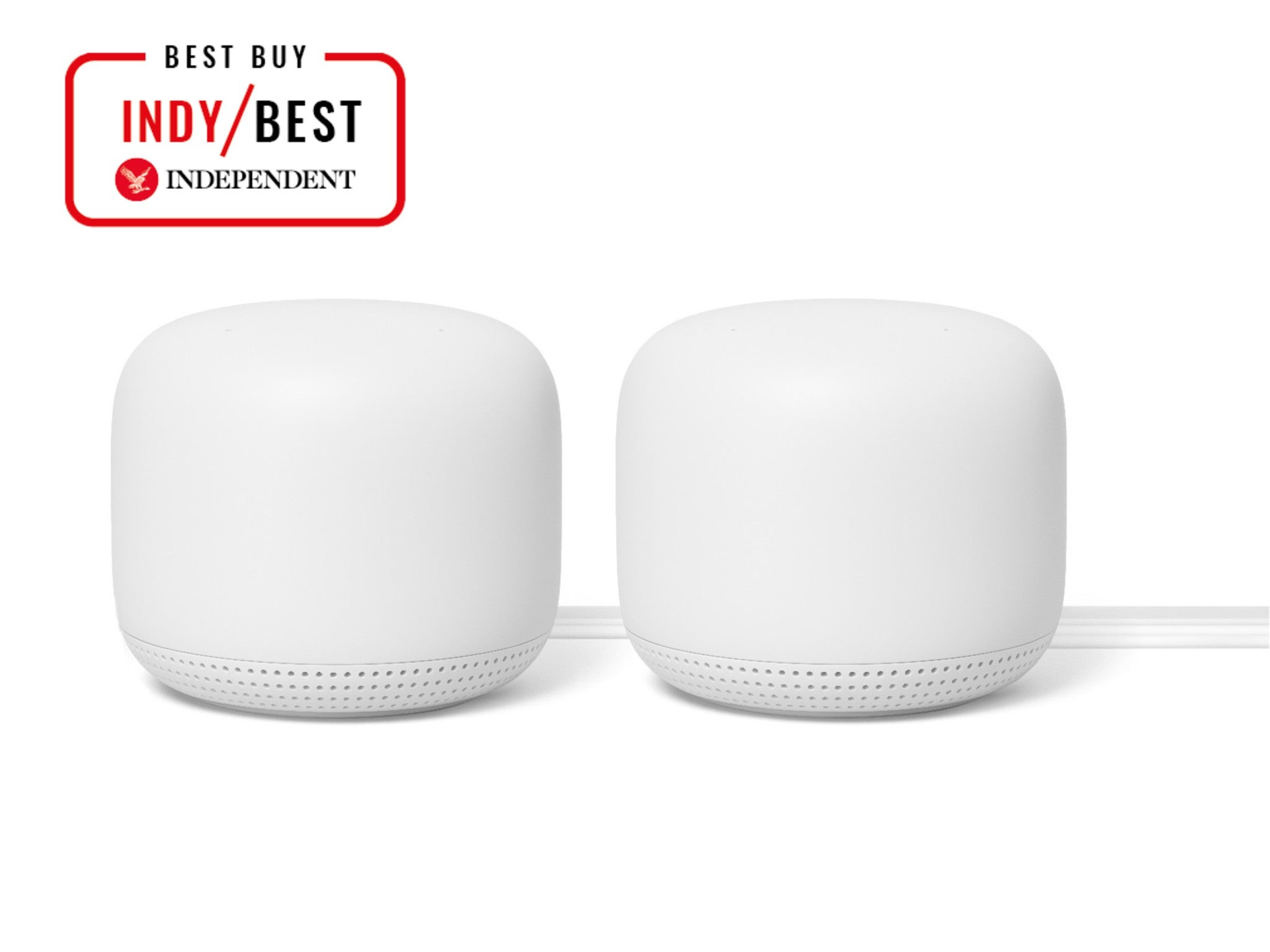
The Independent's journalism is supported by our readers. When you purchase through links on our site, we may earn commission. Why trust us?
10 best wifi extenders and boosters tried and tested for a reliable connection throughout your home
Stay in the loop – no matter what room you’re in – with these clever wifi extender systems
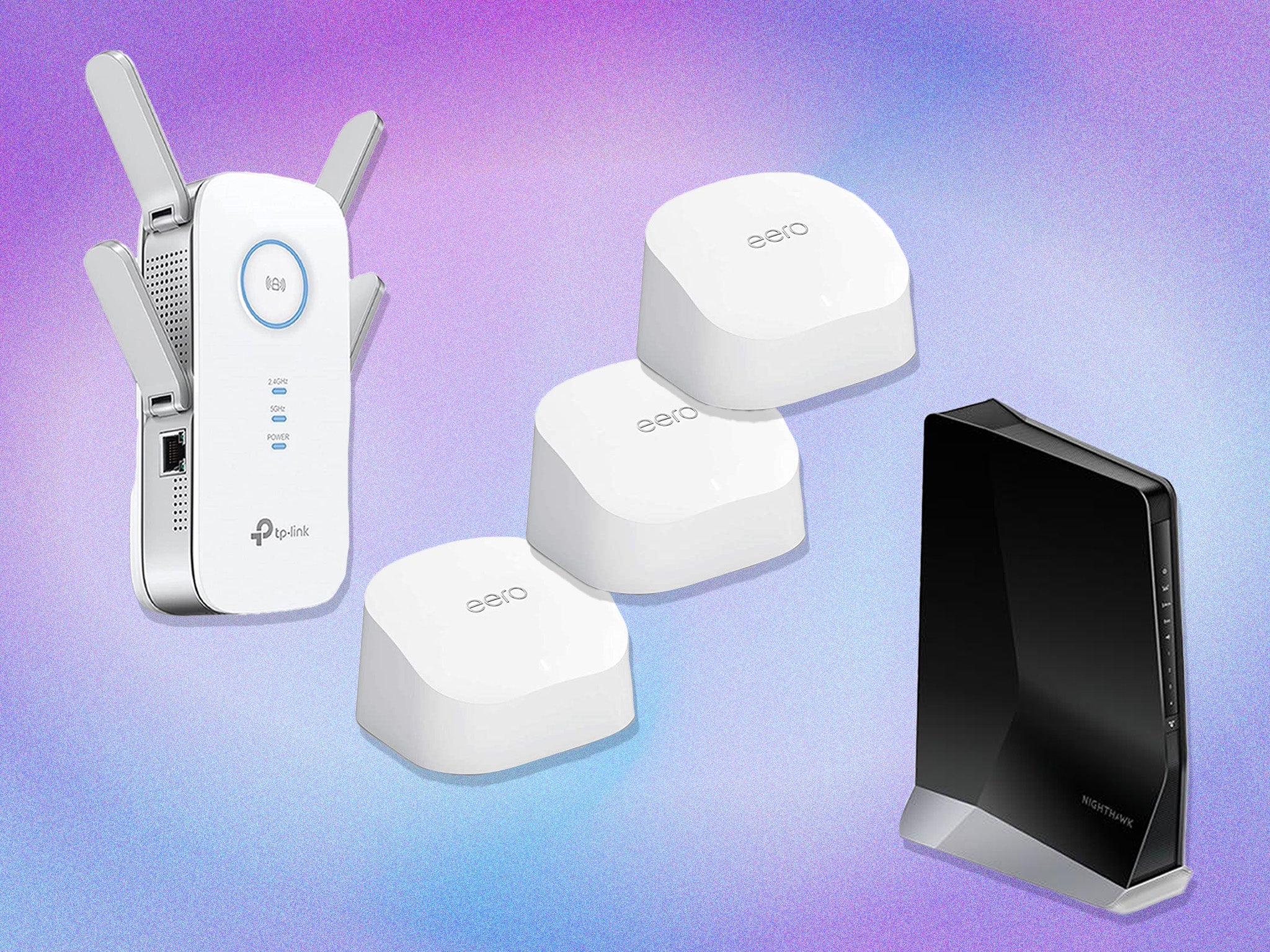
You know how it is: you’ve just invested in a new router, perhaps a new internet service provider, and while the promised connection speeds have materialised, they just don’t quite stretch to the study or the bedroom. How annoying.
A Wi-Fi booster or extender increases the wireless range of your current router, and means you can enjoy internet connectivity in the furthest reaches of your home. The extender receives the signal from the router and broadcasts it again.
Some extenders are powerline adapters – these are clever devices which plug into your mains system at the router and elsewhere, transmitting the signal through the power lines. But they only work on one circuit, if you have more than one circuit in your home, then this system won’t work across both.
You could also look into a mesh Wi-Fi system. These do a similar job but you can add multiple nodes (as the extra locations are often called) across your home. A mesh also works well because the individual nodes talk to each other, rather than always back to the original router.
Some caveats to start with: the speeds enjoyed by a laptop, say, that is wired to the router itself will exceed the speeds you’ll get wirelessly from the same router. Of course, even if the gadget is connected by cable to the Wi-Fi extender, the wireless journey from router to extender will impact the speed.
Similarly, even the best extender cannot deliver traffic speeds at greater than the router is providing, obviously. If you have a very fast router, look out for an extender with Wi-Fi 6, which is the latest standard, and can offer fast speeds to more devices at the same time.
Note that not all extenders work effortlessly with all systems: if you have fibre broadband, for example, you may need to fiddle with the settings to get the extender to play nicely with it.
How we tested
We tested for ease of set-up, simplicity of use, good design, strong value and effectiveness of range. Testing included speed checks at various locations, to see how well the signal was holding up, and how this was impacted as more or fewer devices were connected to the signal.
The best Wi-Fi boosters and extenders for 2023 are:
- Best overall – Google Nest wifi: from £149, Google.com
- Best for super fast connections – Netgear orbi RBK852: £599.99, Netgear.co.uk
- Best for reliability – BT whole home Wi-fi: £169.99, Amazon.co.uk
- Best value – Netgear nighthawk X4S extender: £159.99, Amazon.co.uk
- Best budget option – TP-Link RE650: £59.99, Amazon.co.uk
Google Nest Wifi

- Best: Wifi extender overall
- Modem included: No
- Wifi 6: No
- Number of satellites: 1
- Speed: 802.11a/b/g/n/ac
- Frequencies: 2.4GHz and 5GHz simultaneous dual band
- Extender, mesh or powerline: Mesh
Google’s system is great at extending any wireless range, and you can add extra units whenever you like. There are two distinct elements: the router (which connects by cable to your internet provider’s router) and the wifi point which spreads the signal. It’s all controlled by the Google Home app which makes set-up easy and allows you to check connection speeds, how many devices are connected where, and more. You can also listen to music, for instance, through the wifi point as it’s a smart speaker, which responds when you say: “Hey, Google”.
All the components are beautifully designed and pleasing to look at, so you won’t feel you need to hide them away. Google claims you can connect up to 200 devices at a time. We haven’t tried this, but certainly with everything we could throw at it there was no slowdown. The router costs £149, the point on its own is £129, while router and point are £239.
Netgear nighthawk AX8 extender
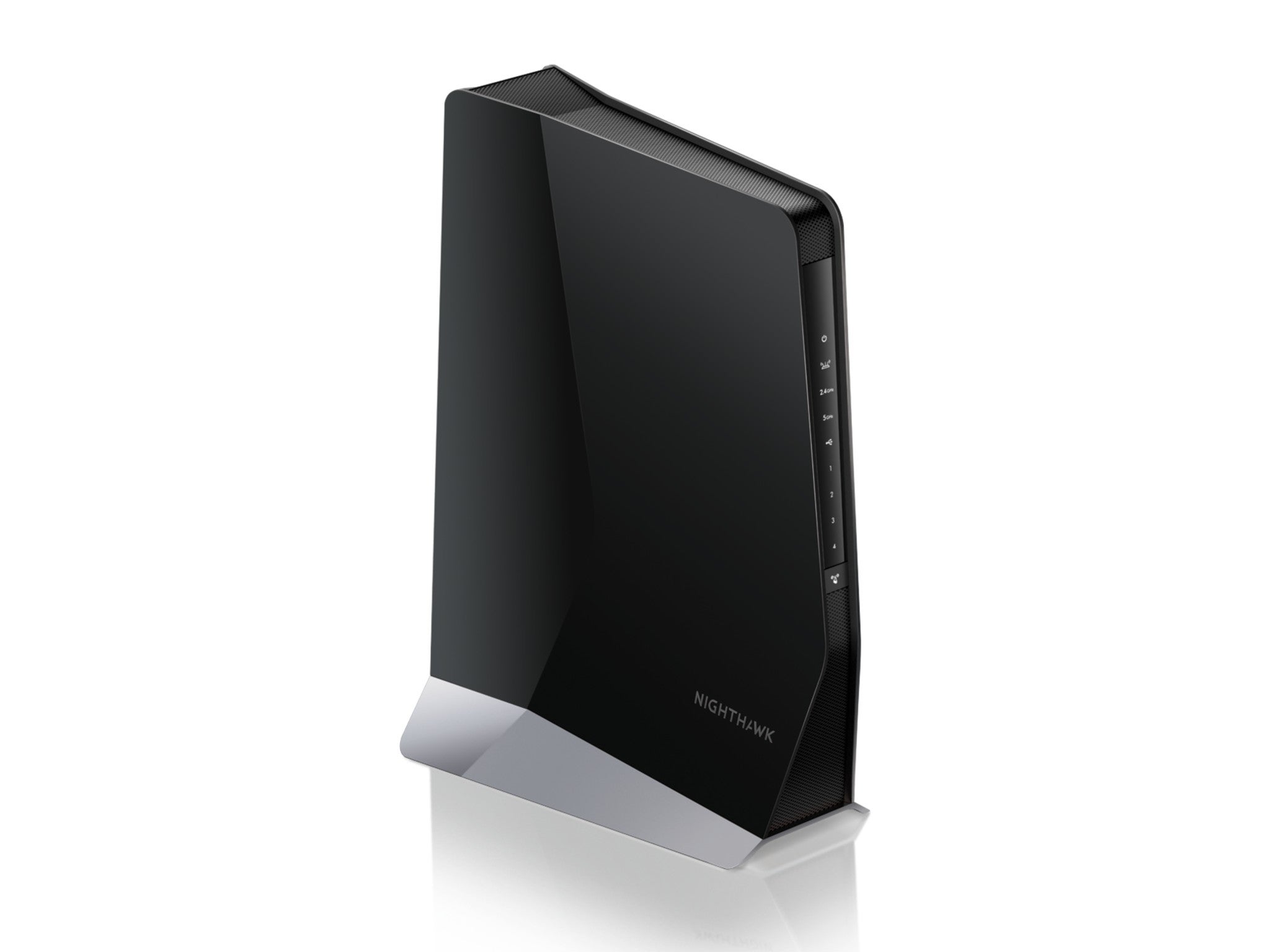
- Best: For small homes
- Modem included: No
- Wifi 6: Yes
- Number of satellites: N/A
- Speed: 802.11 a/n/ac/ax
- Frequencies: Dual band, 2.4GHz and 5GHz
- Extender, mesh or powerline: Extender
If you don’t have thick walls, lots of rooms or multiple floors, then a mesh could be overkill, especially if the extender is a wifi 6 model, like this one. The nighthawk looks chic in its uncompromising black livery and it adds to an existing set-up.
Netgear claims it works with any router. If the service provider’s router is wifi 6 as well, you’ll be able to make the most of this, though it’s designed to work with older or slower routers, too – you just won’t get the faster speeds, of course. It streams data to multiple devices simultaneously rather than one after the other. You just need to plug the nighthawk in where the signal from your router can reach it, and after that it offers a wide area of connectivity. Range is strong and worked well even when it was on a different floor from the router itself.
Eero 6 mesh wifi
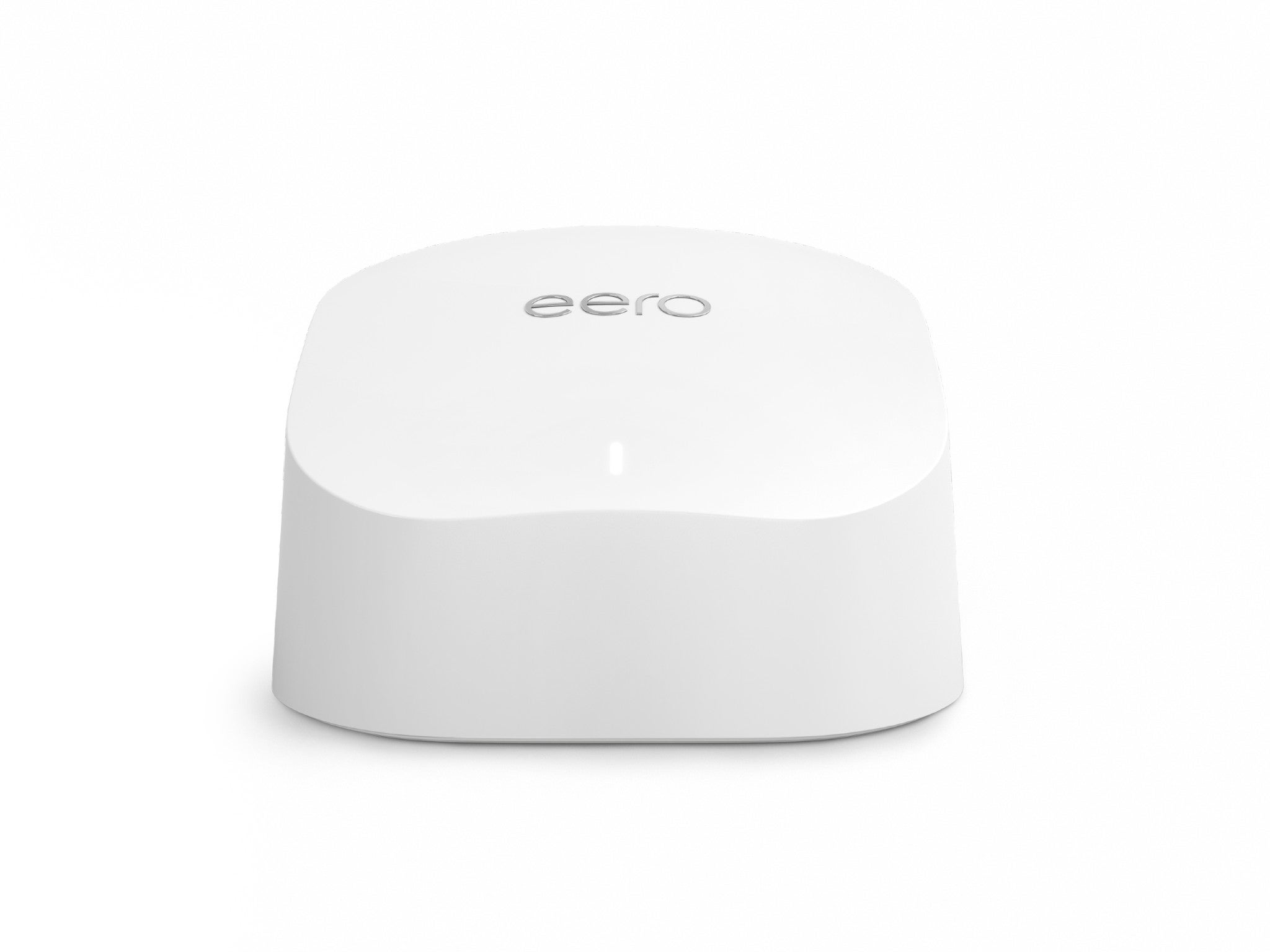
- Best: For simple set-up
- Modem included: No
- Wifi 6:: Yes
- Number of satellites: 2
- Speed: WiFi 6 IEEE 802.11ax
- Frequencies: Dual band, 2.4GHz and 5GHz
- Extender, mesh or powerline: Mesh
This is a wifi 6 router capable of putting data through at very high speeds. Set-up through a smartphone companion, the app is easy to use and links to an Amazon account. It also has decent security features so you can be alerted if there’s a new gadget connected to your network. Like the regular Eero (£79, Amazon.co.uk), the design is good enough to have on show, which can only help with data transfer, compared to tucking it away behind the wardrobe.
Netgear orbi RBK852
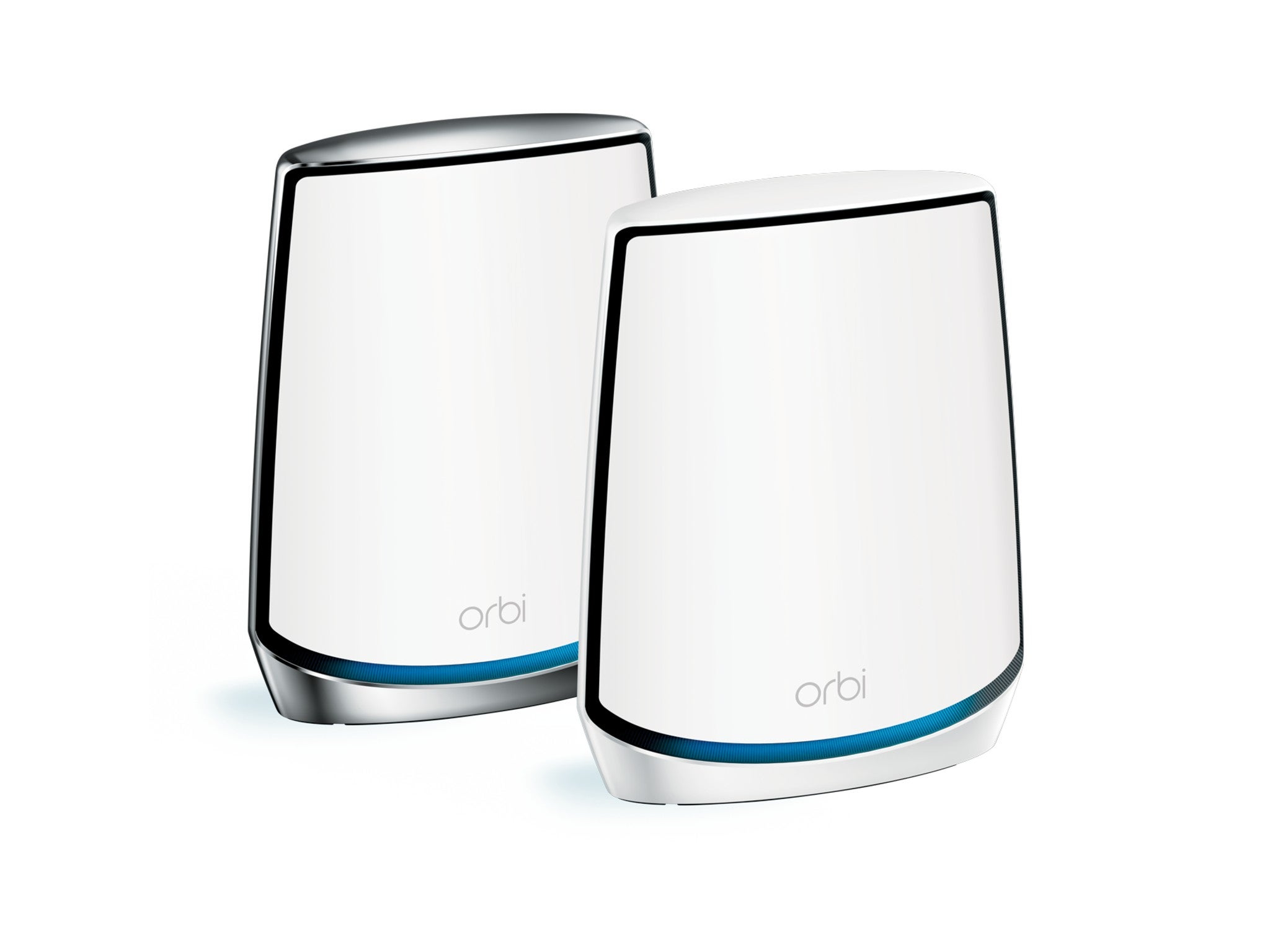
- Best: For super fast connections
- Modem included: No
- Wifi 6: Yes
- Number of satellites: 1
- Speed: WiFi 6 IEEE 802.11ax
- Frequencies: 2.4GHz, 5GHz, tri-band
- Extender, mesh or powerline: Mesh
Want to stream 4K video, while someone else is using a data-hungry program that’s uploading to the internet? Say no more. This router can manage very fast data speeds because it’s a wifi 6 system. It can also manage multiple devices simultaneously without problems.
Orbi’s software can alert you if a new device is connecting to your network and can troubleshoot any issues. Tri-band means that as well as 5GHz and 2.4GHz bands, there’s also a 5GHz link between the router and satellite. This version comes with one router and one satellite, but there’s also a version with two satellites, or you can add a satellite later. This set-up is pricey but a real star performer.
BT whole home Wi-fi
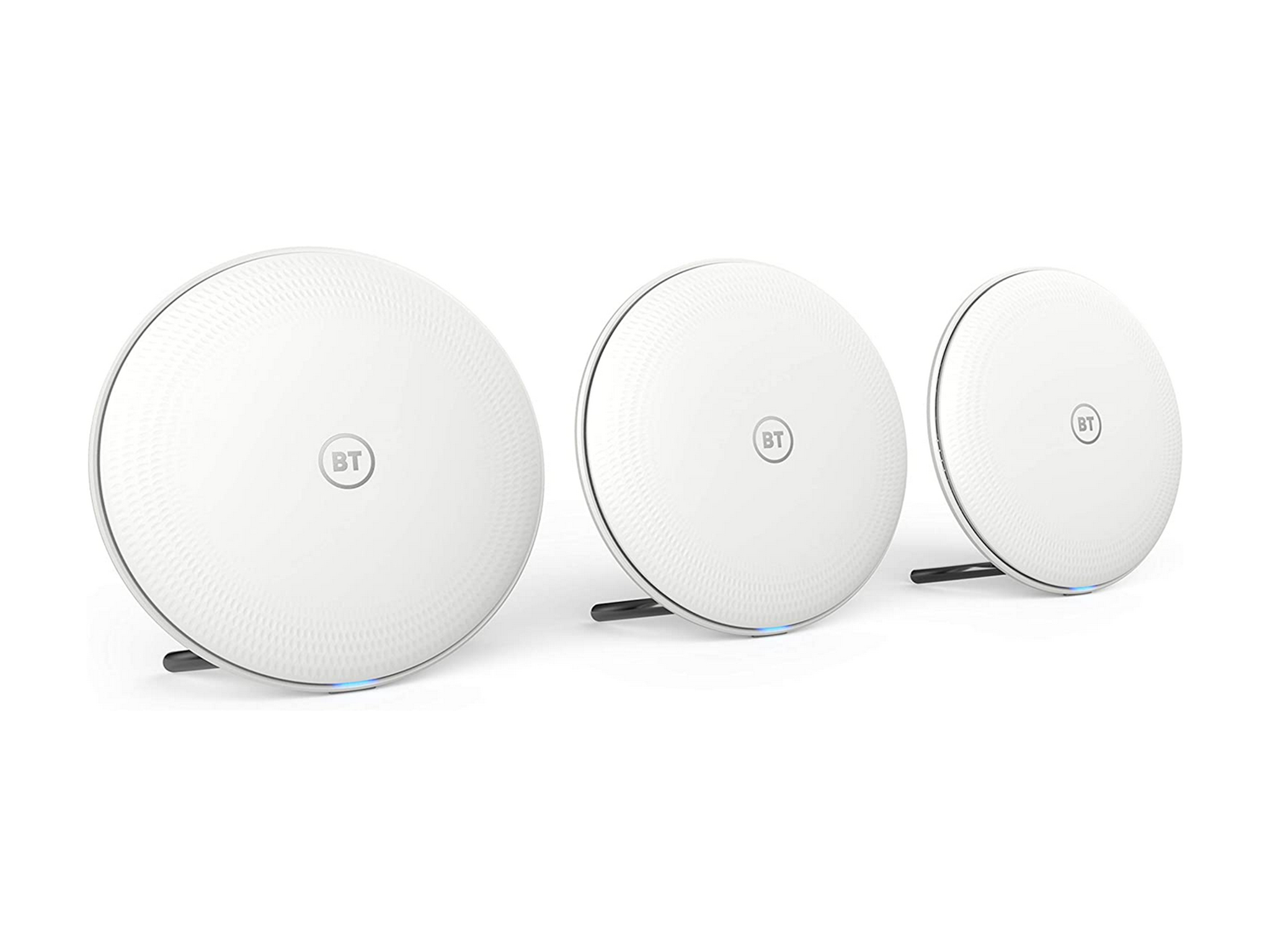
- Best: For reliability
- Modem included: No
- Wifi 6: No
- Number of satellites: 2
- Speed: 802.11 a/b/ac/g/n
- Frequencies: Dual band, 2.4GHz and 5GHz
- Extender, mesh or powerline: Mesh
BT’s whole home wifi looks great: two neat discs which are attractive but discreet. If two units isn’t enough, you can add extra discs as needed - up to a maximum of six. Set-up means downloading the relevant smartphone app and following instructions from there.
Like with Google’s devices, the app can simply tell you if you need to move one of the discs nearer for it to work properly. The system was fast and far-reaching, with solid performance – this is a reliable mesh router, and the discs work with all broadband providers, not just BT.
TP-Link deco M5 AC1300
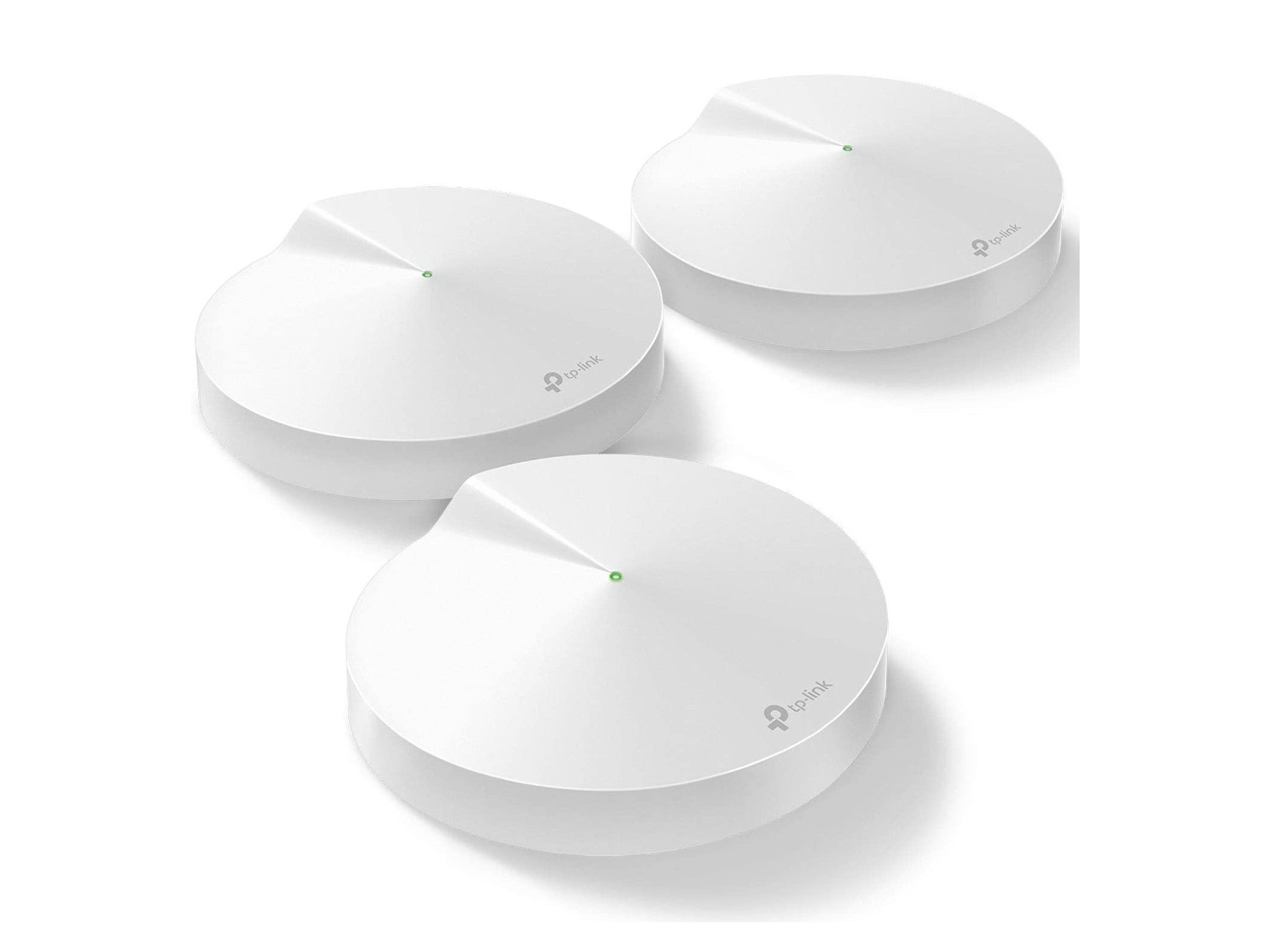
- Best: Design
- Modem included: No
- Wifi 6: No
- Number of satellites: 2
- Speed: 802.11a/b/g/n/ac
- Frequencies: Dual band, 2.4GHz and 5GHz
- Extender, mesh or powerline: Mesh
The stylish discs that make up the deco M5 are efficient and very easy to set up. They have neat controls, via a smartphone app, so you can turn individual devices off or make sure others have priority. There are even parental controls to help keep kids away from adult content.
Once set-up is complete, it’s very easy to use, too. The TP-Link deco M5 has come down in price, making it very good value. This, combined with the decent range this three-disc set-up has, is enough to make it appealing.
Netgear EX7500 mesh range extender
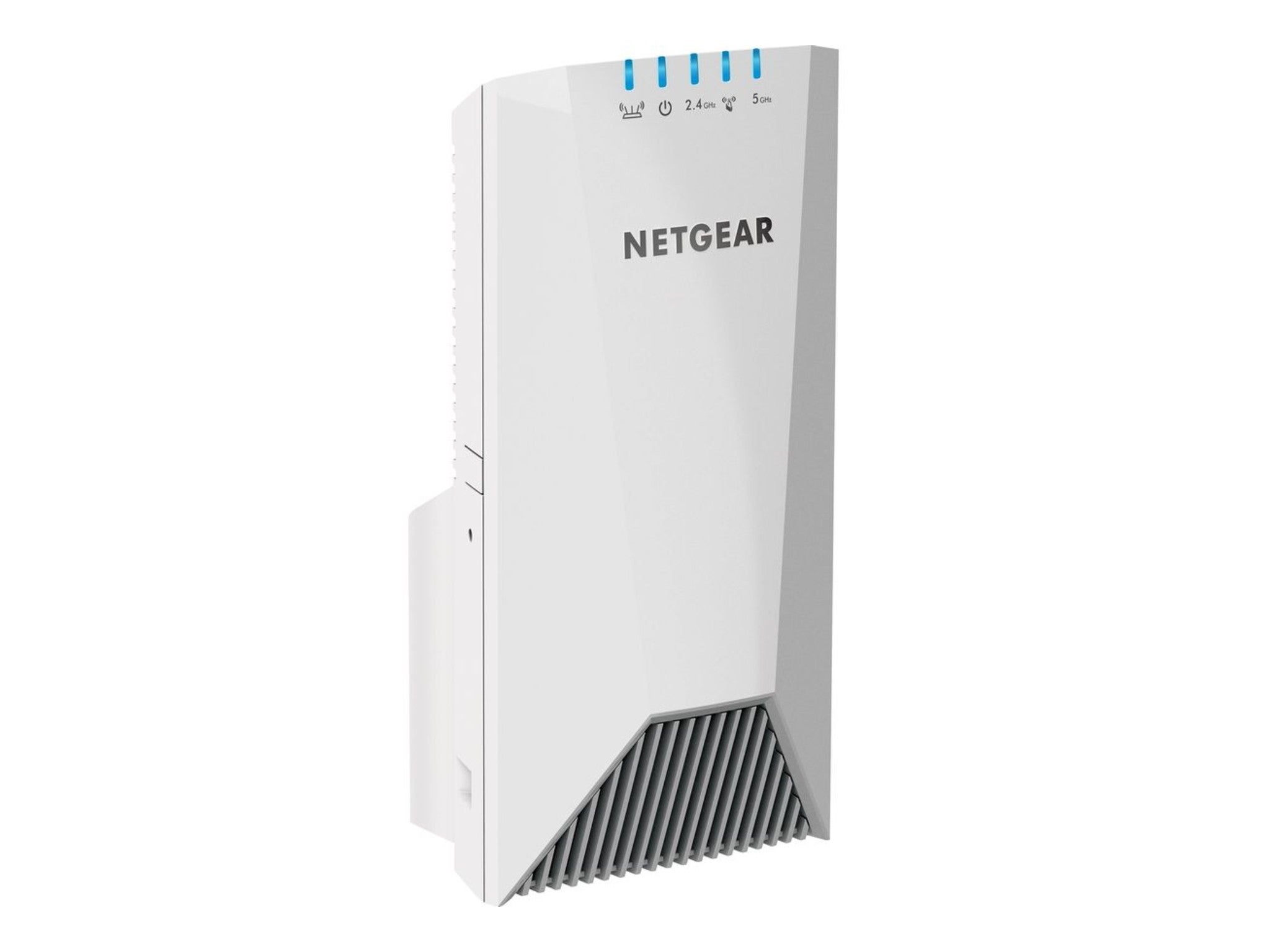
- Best: Value
- Modem included: No
- Wifi 6: No
- Number of satellites: N/A
- Speed: 802.11a/b/g/n/ac
- Frequencies: 2.4GHz, 5GHz, tri-band
- Extender, mesh or powerline: Extender
This device is not the most handsome on test, but it does the job. It picks up the signal from your router and rebroadcasts it powerfully around your home. If you don’t need the extra range that a mesh network with multiple satellites provides, then this is a highly affordable solution. In almost every way, this is an outstanding machine. The only way in which it’s not so good is that it’s a wifi 5, not wifi 6 device, so it can’t match the fastest speeds.
TP-Link AC2600
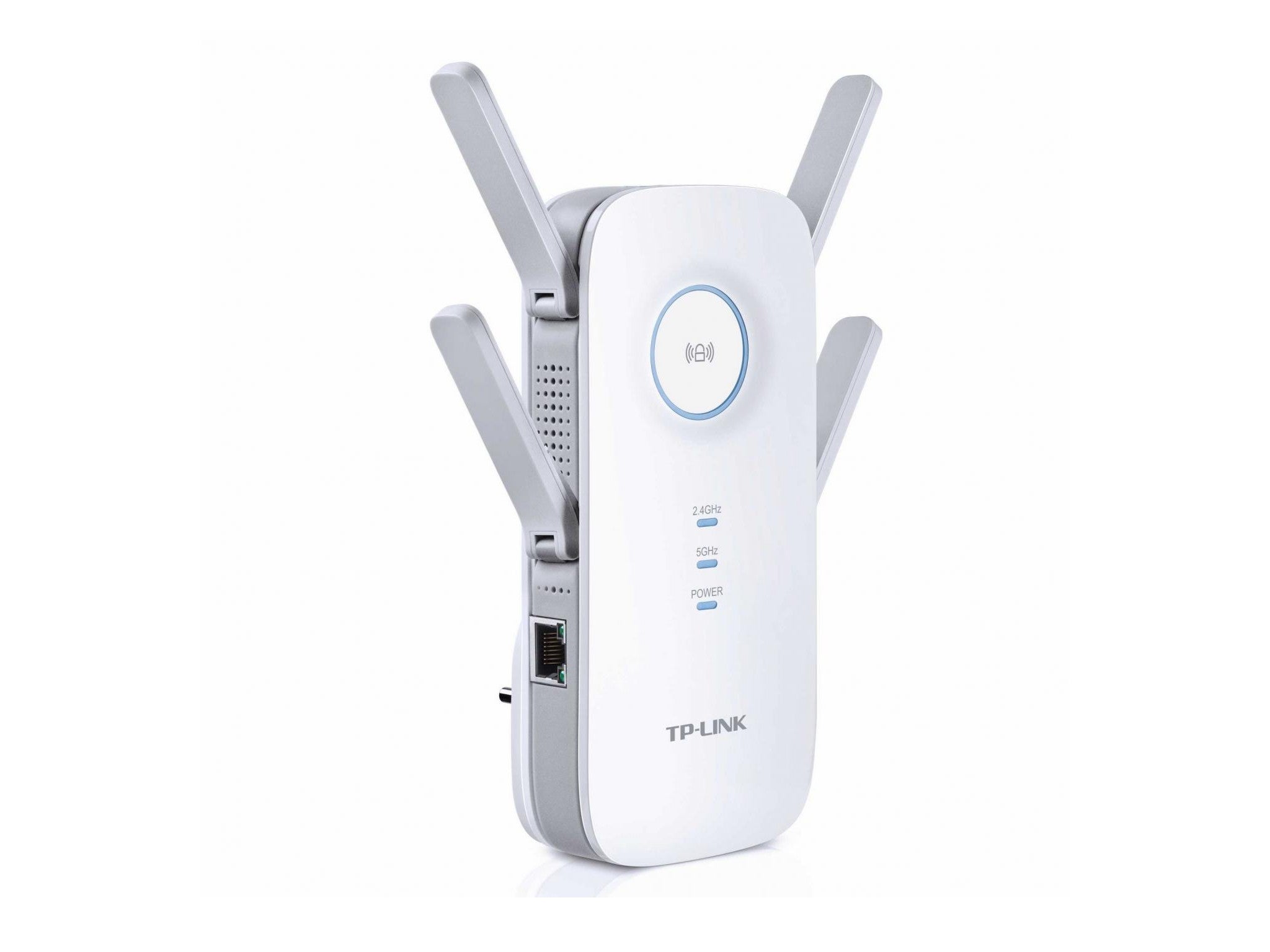
- Best: Budget option
- Modem included: No
- Wifi 6: No
- Number of satellites: N/a
- Speed: 802.11 b/g/n/ac
- Frequencies: Dual band, 2.4GHz and 5GHz
- Extender, mesh or powerline? : Extender
Looking like a delighted alien robot throwing up its arms in joy, this extender is very keenly priced and works well. Plug it into a socket near to the router – it doesn’t need to be wired to it – and it will share the signal effectively. Set-up was not as straightforward as some here, though still manageable using the WPS button on the front and the useful Tether app which guides you.
Note that with the arms gaily extended, this can take up so much space that you can struggle to plug something into the adjacent socket.
TP-Link RE505x
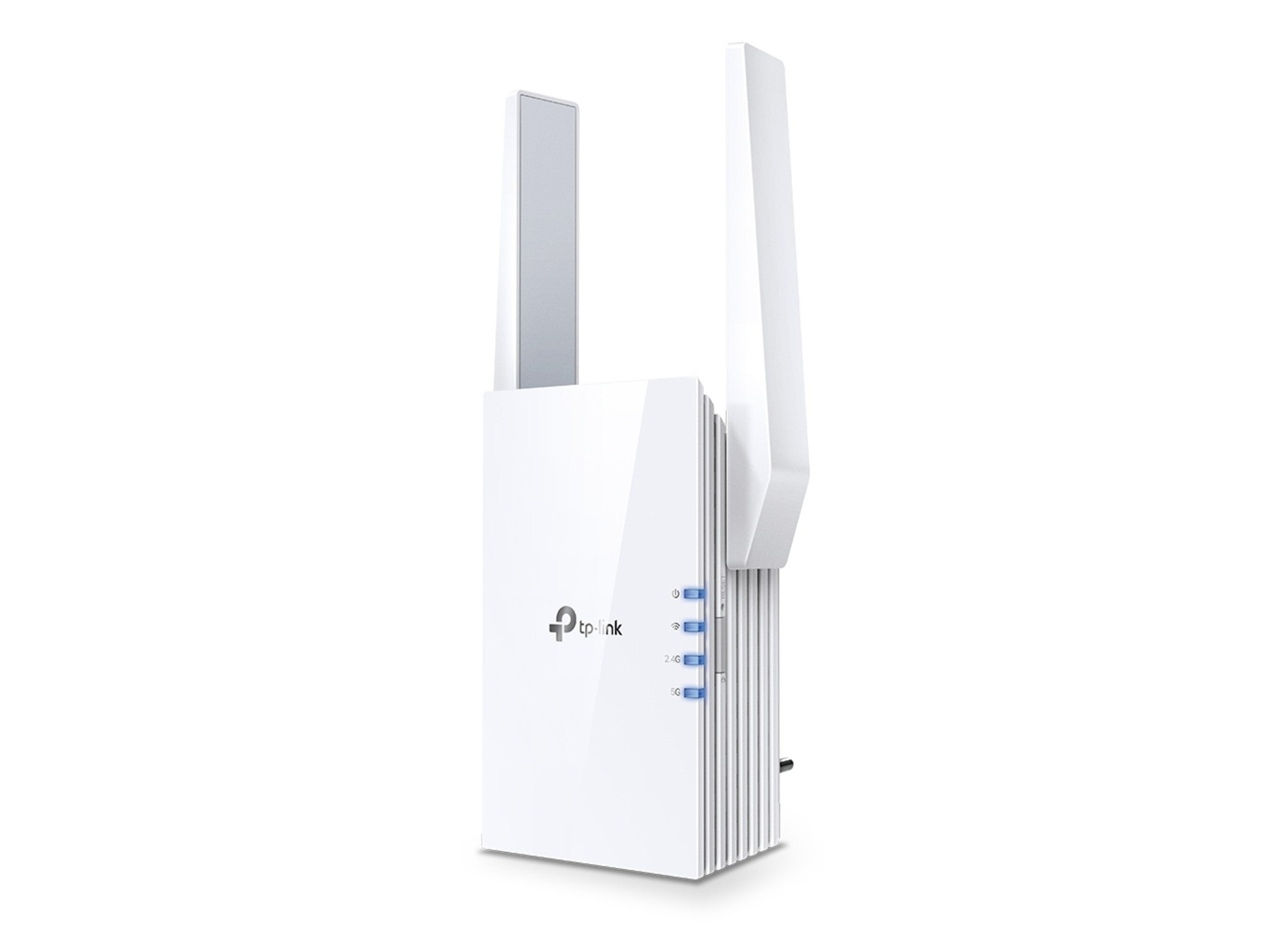
- Best: Wifi 6 router
- Modem included: No
- Wifi 6: Yes
- Number of satellites: N/A
- Speed: 802.11 a/n/ac/ax
- Frequencies: Dual band, 2.4GHz and 5GHz
- Extender, mesh or powerline: Extender
Another slightly alien-looking device from TP-Link, this is great if you have a wifi 6 router and want to extend the range. Set-up is simple, especially through the Tether smartphone app, but a bit more complicated through a web browser. You need to make sure the LED on the extender shows solid blue – if it’s off or glows red, then the signal isn’t strong enough and you need to move the TP-Link closer to the router.
Devolo mesh wifi 2
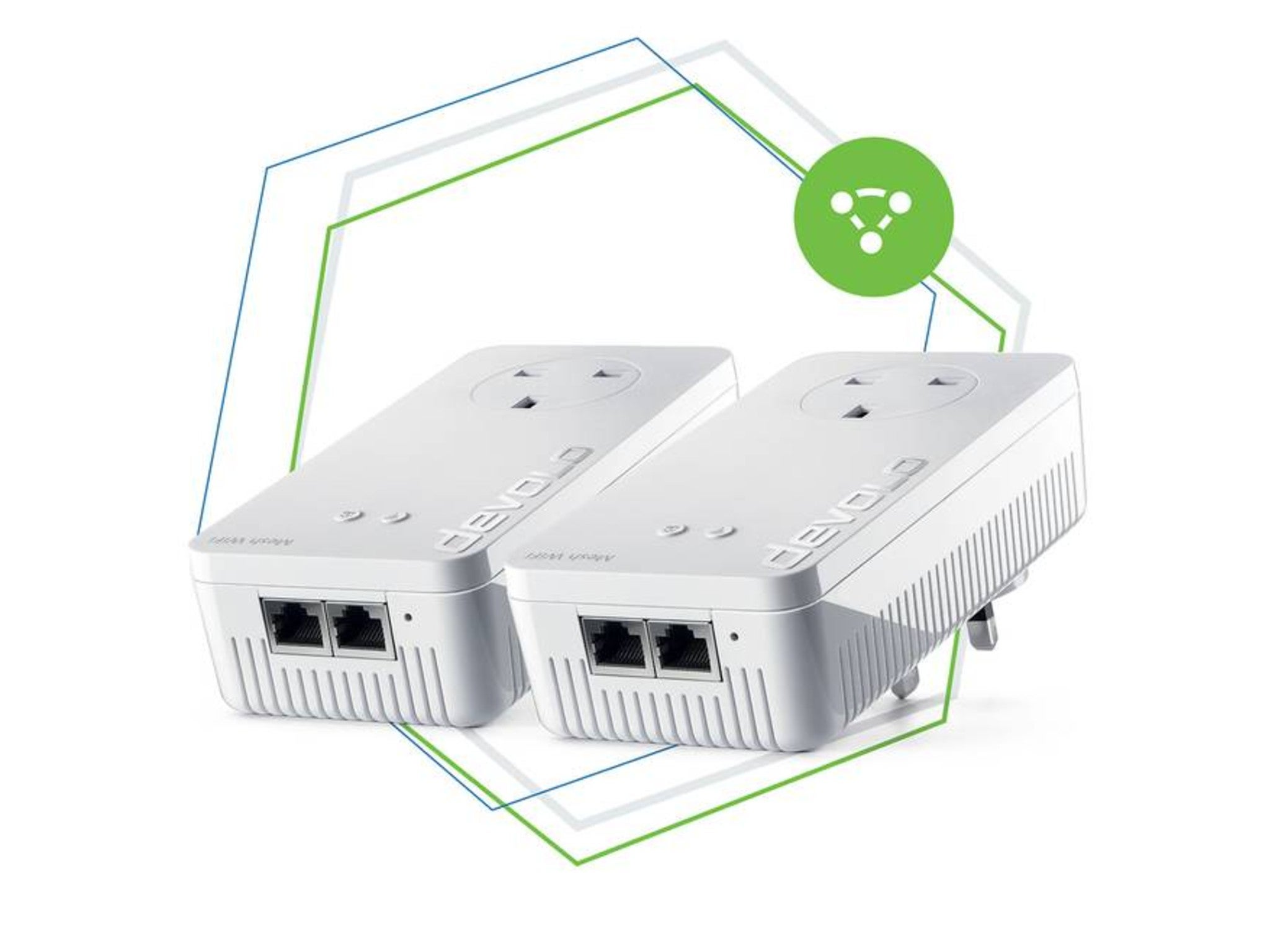
- Best: For homes with thick walls
- Modem included: No
- Wifi 6: No
- Number of satellites: 1
- Speed: 802.11 n/ac
- Frequencies: Dual band, 2.4GHz and 5GHz
- Extender, mesh or powerline: Powerline and mesh
If you live somewhere with walls that wifi finds hard to penetrate, then a powerline system like this can help. Helpfully, the adapters have pass-through sockets in them so you can still plug other gadgets in as well. In other words, you don’t lose a plug socket when you install the mesh wifi 2. There are also Ethernet ports in each adapter, one of which is used to connect the first adapter to the router.
Devolo loses marks for unhelpful documentation which doesn’t help you set it up. This also requires both adapters to be in the same room as you set up, and for you to move the second one later, which is a little counter-intuitive. Once it’s done though, performance is good. For bigger homes, a three-adapter version is available for £274.99 (Amazon.co.uk).
Wifi extenders FAQ
What is a wifi extender?
A wifi extender is a small device similar to a wifi router, which acts as a booster for your home’s wifi signal. Put simply, it connects wirelessly to your main wifi source and amplifies the signal to reach corners of your home your wifi router can’t reach by itself. This is especially useful in large homes with multiple storeys or homes with thick walls or walls made of stone or brick.
The stronger signal gives you faster internet speeds and reduces the dropped connections, and multiple extenders can be linked together to cover even more of your home. Most modern wifi extenders operate on mesh network technology, meaning your phone, laptop, TV and other devices will still recognise your home’s wifi connection as a single access point rather than a collection of individual boosters. Mesh networks also allow you to move from room to room without your device having to disconnect and reconnect to different wifi extenders.
How does a wifi booster work?
Your main wifi router sends and receives data using radio waves, which get exponentially weaker the farther from the wifi router they travel. A wifi booster can be positioned near enough to the wifi hub to pick up the data connection clearly, which it then amplifies and sends out again. By relaying your wifi connection through these boosters, it’s possible to cover your entire home with a fast and reliable internet connection.
The verdict: Wi-Fi boosters4 and extenders
For an extender to a wifi 6 router, the Netgear nighthawk AX8 extender is tremendous. If you need to reach further, then the Google Nest wifi is powerful and can be added to as needed, while the curious-looking TP-Link RE650 is great value.
Find the best broadband deals at Independent Advisor
Catch up on all your favourite shows with our best TV streaming devices and boxes from the likes of Sky and Apple


